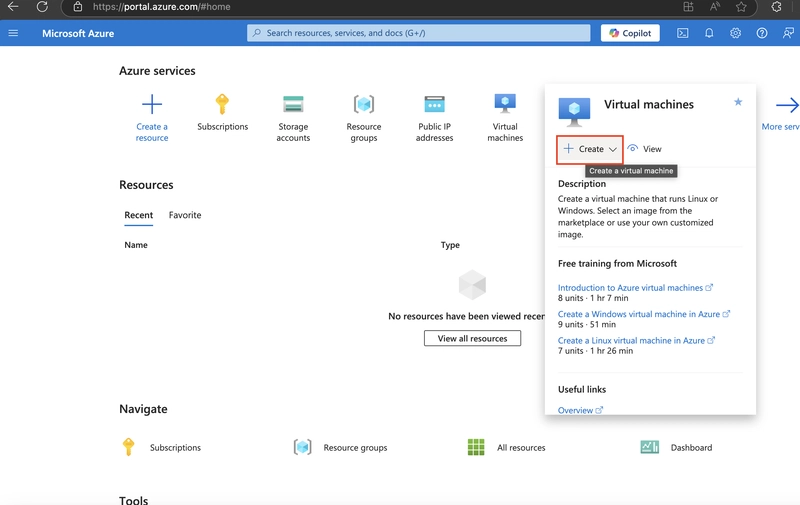"Unlocking Neural Networks: The Future of Requirements-Based Testing"
In an era where technology evolves at breakneck speed, the demand for more efficient and effective testing methodologies has never been greater. Are you grappling with the complexities of ensuring that your software meets its requirements while also striving to keep pace with rapid development cycles? If so, you're not alone. Many professionals in the tech industry find themselves overwhelmed by traditional testing processes that often fall short in addressing dynamic project needs. Enter neural networks—an innovative solution poised to revolutionize requirements-based testing. In this blog post, we will delve into what neural networks are and how they can transform your approach to software quality assurance. Imagine harnessing advanced algorithms that learn from data patterns to enhance accuracy and efficiency in your testing processes! We’ll explore real-world applications showcasing their impact, discuss challenges you might face when implementing these technologies, and offer solutions tailored for seamless integration into your existing frameworks. By understanding these cutting-edge advancements today, you'll be better equipped to navigate tomorrow's landscape of AI-driven testing strategies—ensuring not just survival but thriving success in a competitive market. Join us as we unlock the future of requirements-based testing together! What are Neural Networks? Neural networks are computational models inspired by the human brain's architecture, designed to recognize patterns and solve complex problems. They consist of interconnected nodes or neurons organized in layers: an input layer, one or more hidden layers, and an output layer. Each connection has a weight that adjusts as learning occurs through training on data sets. This process enables neural networks to learn from examples, making them particularly effective for tasks such as image recognition, natural language processing, and predictive analytics. Key Characteristics Learning Mechanism: Neural networks utilize algorithms like backpropagation to minimize errors by adjusting weights based on the difference between predicted outputs and actual results. Feature Representation: The ability of neural networks to automatically extract features from raw data is crucial; they can capture intricate relationships within datasets without requiring extensive manual feature engineering. Generalization: A well-trained neural network can generalize its learning to unseen data, which is vital for applications in critical systems where reliability is paramount. Understanding these foundational aspects of neural networks lays the groundwork for exploring their role in testing methodologies and enhancing system reliability across various domains. The Role of Requirements-Based Testing Requirements-based testing (RBT) plays a crucial role in ensuring the reliability and safety of deep neural networks (DNNs), particularly in critical systems. By utilizing structured natural language requirements, RBT facilitates the generation of comprehensive test suites that effectively uncover faults within DNNs. This method emphasizes tracing tests back to specific requirements, thereby enhancing accountability and traceability during the testing process. Key Benefits of RBT One significant advantage of RBT is its ability to validate machine learning components against unseen data, which is essential for assessing real-world performance. Furthermore, it addresses challenges associated with translating informal requirements into formal specifications by employing natural language expressions that align closely with user expectations. By lifting these requirements into a semantic feature space tailored for particular problem domains, RBT ensures more accurate evaluations through generative models and targeted test input generation techniques. In applications such as autonomous driving, where fault detection can have life-or-death implications, the effectiveness of methods like rbt4dnn becomes evident. These approaches not only identify failure scenarios but also minimize false positives in test failures—an essential aspect when fine-tuning Learning Detection Models for enhanced accuracy and reliability across various datasets and operational contexts.# How Neural Networks Enhance Testing Processes Neural networks significantly improve testing processes by providing a structured approach to validate machine learning models against defined requirements. The rbt4dnn method, which utilizes natural language requirements, generates comprehensive test suites for deep neural networks (DNNs). This technique ensures that tests are traceable back to specific functional and feature-based requirements, enhancing reliability in critical systems such as autonomous vehicles. By lifting informal specifications into a semantic feature space, the method effectively identifies faults within DNNs through rigorous evaluation on unseen data. Furthermore, it leverages generative

In an era where technology evolves at breakneck speed, the demand for more efficient and effective testing methodologies has never been greater. Are you grappling with the complexities of ensuring that your software meets its requirements while also striving to keep pace with rapid development cycles? If so, you're not alone. Many professionals in the tech industry find themselves overwhelmed by traditional testing processes that often fall short in addressing dynamic project needs. Enter neural networks—an innovative solution poised to revolutionize requirements-based testing. In this blog post, we will delve into what neural networks are and how they can transform your approach to software quality assurance. Imagine harnessing advanced algorithms that learn from data patterns to enhance accuracy and efficiency in your testing processes! We’ll explore real-world applications showcasing their impact, discuss challenges you might face when implementing these technologies, and offer solutions tailored for seamless integration into your existing frameworks. By understanding these cutting-edge advancements today, you'll be better equipped to navigate tomorrow's landscape of AI-driven testing strategies—ensuring not just survival but thriving success in a competitive market. Join us as we unlock the future of requirements-based testing together!
What are Neural Networks?
Neural networks are computational models inspired by the human brain's architecture, designed to recognize patterns and solve complex problems. They consist of interconnected nodes or neurons organized in layers: an input layer, one or more hidden layers, and an output layer. Each connection has a weight that adjusts as learning occurs through training on data sets. This process enables neural networks to learn from examples, making them particularly effective for tasks such as image recognition, natural language processing, and predictive analytics.
Key Characteristics
-
Learning Mechanism: Neural networks utilize algorithms like backpropagation to minimize errors by adjusting weights based on the difference between predicted outputs and actual results.
-
Feature Representation: The ability of neural networks to automatically extract features from raw data is crucial; they can capture intricate relationships within datasets without requiring extensive manual feature engineering.
-
Generalization: A well-trained neural network can generalize its learning to unseen data, which is vital for applications in critical systems where reliability is paramount.
Understanding these foundational aspects of neural networks lays the groundwork for exploring their role in testing methodologies and enhancing system reliability across various domains.
The Role of Requirements-Based Testing
Requirements-based testing (RBT) plays a crucial role in ensuring the reliability and safety of deep neural networks (DNNs), particularly in critical systems. By utilizing structured natural language requirements, RBT facilitates the generation of comprehensive test suites that effectively uncover faults within DNNs. This method emphasizes tracing tests back to specific requirements, thereby enhancing accountability and traceability during the testing process.
Key Benefits of RBT
One significant advantage of RBT is its ability to validate machine learning components against unseen data, which is essential for assessing real-world performance. Furthermore, it addresses challenges associated with translating informal requirements into formal specifications by employing natural language expressions that align closely with user expectations. By lifting these requirements into a semantic feature space tailored for particular problem domains, RBT ensures more accurate evaluations through generative models and targeted test input generation techniques.
In applications such as autonomous driving, where fault detection can have life-or-death implications, the effectiveness of methods like rbt4dnn becomes evident. These approaches not only identify failure scenarios but also minimize false positives in test failures—an essential aspect when fine-tuning Learning Detection Models for enhanced accuracy and reliability across various datasets and operational contexts.# How Neural Networks Enhance Testing Processes
Neural networks significantly improve testing processes by providing a structured approach to validate machine learning models against defined requirements. The rbt4dnn method, which utilizes natural language requirements, generates comprehensive test suites for deep neural networks (DNNs). This technique ensures that tests are traceable back to specific functional and feature-based requirements, enhancing reliability in critical systems such as autonomous vehicles. By lifting informal specifications into a semantic feature space, the method effectively identifies faults within DNNs through rigorous evaluation on unseen data. Furthermore, it leverages generative models for input generation and fault detection strategies tailored to various datasets.
Importance of Requirements-Based Testing
The connection between software testing and requirements engineering is paramount; ensuring that neural network components meet their intended functionalities mitigates risks associated with system failures. Through precise representation of features and robust validation techniques, organizations can enhance safety measures while minimizing false positives during testing phases. As demonstrated in experiments focused on autonomous driving models, this innovative approach not only uncovers potential failure scenarios but also refines the training process of Learning Detection Models—ultimately leading to improved performance across diverse applications in AI-driven environments.# Real-World Applications of Neural Networks in Testing
Neural networks are increasingly being integrated into testing processes across various industries, particularly in critical systems where reliability and safety are paramount. The rbt4dnn method exemplifies this application by generating test suites from structured natural language requirements, effectively identifying faults within deep neural networks (DNNs). This approach not only enhances the accuracy of tests but also ensures that they trace back to specific requirements, thus bridging the gap between software testing and requirements engineering.
Fault Detection in Autonomous Systems
One significant real-world application is fault detection in autonomous vehicles. By utilizing zoological features and taxonomic relationships, rbt4dnn can identify potential failure scenarios within DNN models used for navigation and decision-making. Additionally, energy-efficient models like Neural Circuit Policies (NCPs) demonstrate how machine learning can optimize resource consumption while maintaining performance standards. These advancements highlight the transformative impact of neural networks on enhancing testing methodologies across sectors such as telecommunications and automotive technology.# Challenges and Solutions in Implementing Neural Networks
Implementing neural networks presents several challenges, particularly in ensuring reliability and safety within critical systems. One significant hurdle is translating informal requirements into formal specifications that can be effectively tested. The rbt4dnn method addresses this by utilizing structured natural language to generate test suites tailored for deep neural networks (DNNs). This approach not only enhances fault detection but also emphasizes the importance of validating machine-learned components against unseen data, thereby improving overall system robustness.
Fault Detection Strategies
Another challenge lies in identifying false positives during testing phases. By employing generative models alongside feature-based functional requirements, developers can better evaluate DNN behavior across diverse datasets. Moreover, lifting requirements to a semantic feature space allows for more precise representation of input features, ultimately leading to improved model performance and reduced energy consumption—an essential factor when considering sustainability in telecommunications through methods like Neural Circuit Policies (NCPs).
In summary, addressing these challenges through innovative methodologies such as rbt4dnn significantly enhances the effectiveness of neural network implementations while paving the way for future advancements in AI-driven testing processes.# Future Trends: The Evolution of Testing with AI
The evolution of testing methodologies is significantly influenced by advancements in artificial intelligence (AI), particularly through the application of neural networks. As critical systems increasingly rely on deep learning models, ensuring their reliability and safety becomes paramount. Requirements-based testing has emerged as a vital approach, utilizing structured natural language to generate test suites that effectively identify faults within these complex systems. This method not only bridges software testing and requirements engineering but also emphasizes validating machine-learned components against unseen data.
Advancements in Fault Detection
Future trends indicate a growing reliance on generative models for creating diverse test inputs tailored to specific feature representations within the input space. By lifting informal requirements into semantic feature spaces, developers can better assess model behavior under various conditions. Moreover, innovations like rbt4dnn showcase how fault detection strategies can be enhanced using zoological features in autonomous driving scenarios, ultimately improving system robustness while minimizing false positives during evaluations.
As organizations adopt these advanced methodologies, they will benefit from improved accuracy and efficiency in identifying potential failures across different applications—transforming the landscape of software testing for AI-driven technologies.
In conclusion, the integration of neural networks into requirements-based testing represents a significant advancement in software quality assurance. By leveraging the capabilities of neural networks, organizations can enhance their testing processes through improved accuracy and efficiency, ultimately leading to more reliable software products. The real-world applications discussed highlight how industries are already benefiting from this technology, paving the way for broader adoption across various sectors. However, challenges such as data quality and algorithm transparency must be addressed to fully realize these benefits. As we look toward the future, it is clear that AI-driven approaches will continue to evolve and shape testing methodologies, making them more adaptive and intelligent. Embracing these innovations not only prepares teams for upcoming demands but also ensures they remain competitive in an increasingly complex technological landscape. Therefore, understanding and implementing neural networks within requirements-based testing is crucial for any organization aiming to thrive in today's fast-paced digital environment.
FAQs on "Unlocking Neural Networks: The Future of Requirements-Based Testing"
1. What are neural networks?
Neural networks are a subset of artificial intelligence (AI) modeled after the human brain's network of neurons. They consist of interconnected nodes or "neurons" that process data and learn from it through training. This technology is widely used in various applications, including image recognition, natural language processing, and predictive analytics.
2. How does requirements-based testing work?
Requirements-based testing is a software testing approach that ensures the developed system meets specified requirements. It involves creating test cases based on documented requirements to verify functionality, performance, and compliance with user needs. This method helps identify defects early in the development cycle by aligning tests directly with business objectives.
3. In what ways do neural networks enhance testing processes?
Neural networks can significantly improve testing processes by automating test case generation, predicting potential failures based on historical data, and optimizing resource allocation during testing phases. They analyze vast amounts of data quickly to identify patterns that may not be apparent through traditional methods, leading to more efficient and effective testing outcomes.
4. What are some real-world applications of neural networks in software testing?
Real-world applications include automated regression testing where neural networks predict which areas need retesting after code changes; anomaly detection for identifying unexpected behavior in systems; and risk assessment models that prioritize test cases based on their likelihood of failure or impact on users.
5. What challenges exist when implementing neural networks in requirements-based testing?
Challenges include the need for high-quality training data to ensure accurate predictions, integration issues with existing tools and workflows, resistance from teams accustomed to traditional methods, and understanding how to interpret results generated by complex models effectively. Solutions often involve gradual implementation strategies combined with robust training programs for team members.





































































![New Apple iPad mini 7 On Sale for $399! [Lowest Price Ever]](https://www.iclarified.com/images/news/96096/96096/96096-640.jpg)

![Rapidus in Talks With Apple as It Accelerates Toward 2nm Chip Production [Report]](https://www.iclarified.com/images/news/96937/96937/96937-640.jpg)










































































































_Christophe_Coat_Alamy.jpg?#)









































































![[The AI Show Episode 142]: ChatGPT’s New Image Generator, Studio Ghibli Craze and Backlash, Gemini 2.5, OpenAI Academy, 4o Updates, Vibe Marketing & xAI Acquires X](https://www.marketingaiinstitute.com/hubfs/ep%20142%20cover.png)

































































































































![From drop-out to software architect with Jason Lengstorf [Podcast #167]](https://cdn.hashnode.com/res/hashnode/image/upload/v1743796461357/f3d19cd7-e6f5-4d7c-8bfc-eb974bc8da68.png?#)



![[FREE EBOOKS] The Kubernetes Bible, The Ultimate Linux Shell Scripting Guide & Four More Best Selling Titles](https://www.javacodegeeks.com/wp-content/uploads/2012/12/jcg-logo.jpg)



































.jpg?#)



.png?#)
























































